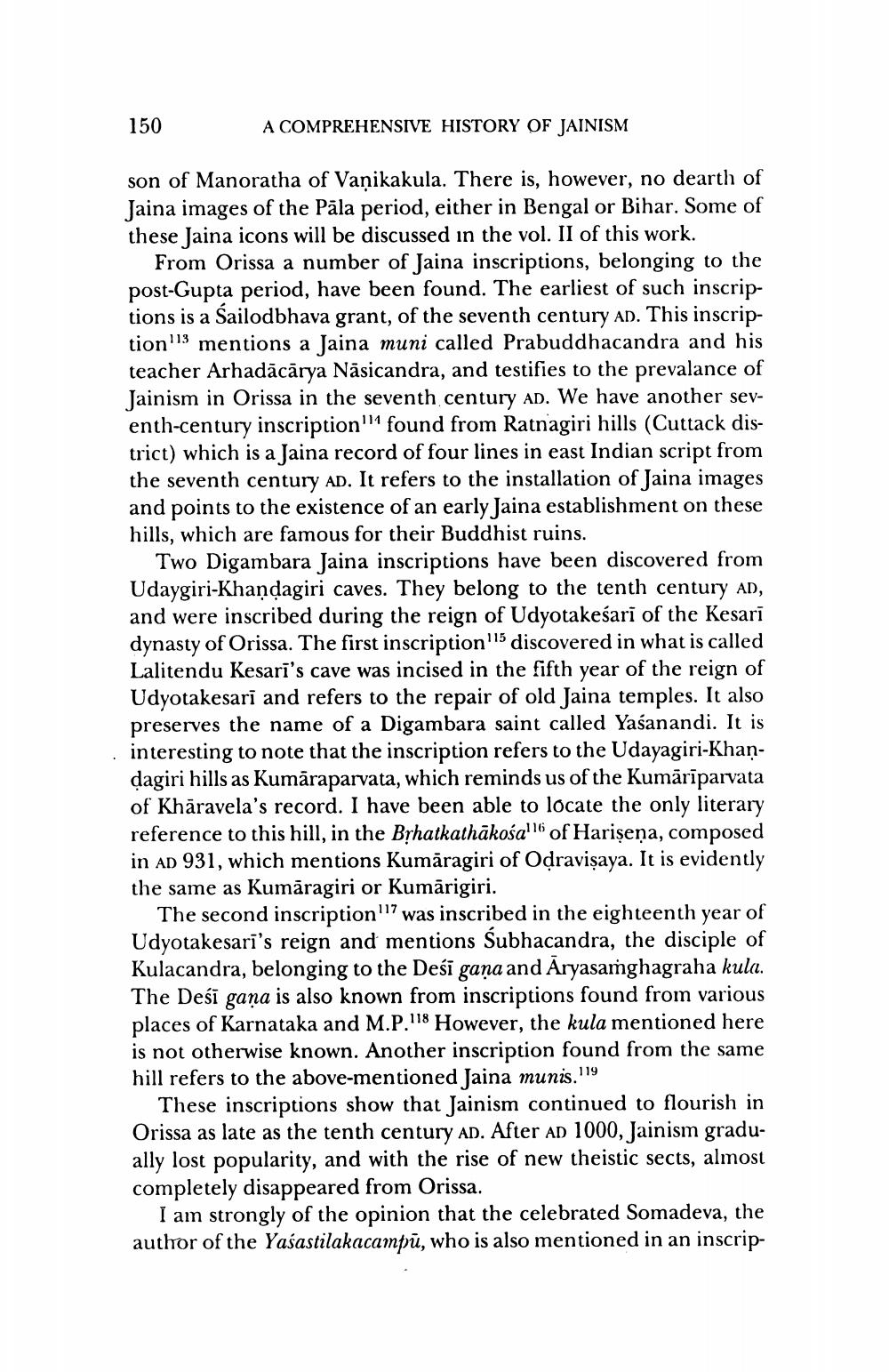________________
150
A COMPREHENSIVE HISTORY OF JAINISM
son of Manoratha of Vanikakula. There is, however, no dearth of Jaina images of the Pāla period, either in Bengal or Bihar. Some of these Jaina icons will be discussed in the vol. II of this work.
From Orissa a number of Jaina inscriptions, belonging to the post-Gupta period, have been found. The earliest of such inscriptions is a Sailodbhava grant, of the seventh century ad. This inscription'13 mentions a Jaina muni called Prabuddhacandra and his teacher Arhadācārya Nāsicandra, and testifies to the prevalance of Jainism in Orissa in the seventh century AD. We have another seventh-century inscription" found from Ratnagiri hills (Cuttack district) which is a Jaina record of four lines in east Indian script from the seventh century AD. It refers to the installation of Jaina images and points to the existence of an early Jaina establishment on these hills, which are famous for their Buddhist ruins.
Two Digambara Jaina inscriptions have been discovered from Udaygiri-Khandagiri caves. They belong to the tenth century AD, and were inscribed during the reign of Udyotakeśarī of the Kesari dynasty of Orissa. The first inscription "15 discovered in what is called Lalitendu Kesarī's cave was incised in the fifth year of the reign of Udyotakesari and refers to the repair of old Jaina temples. It also preserves the name of a Digambara saint called Yaśanandi. It is interesting to note that the inscription refers to the Udayagiri-Khandagiri hills as Kumāraparvata, which reminds us of the Kumāriparvata of Khāravela's record. I have been able to locate the only literary reference to this hill, in the Byhatkathākośal of Harișeņa, composed in AD 931, which mentions Kumāragiri of Odravişaya. It is evidently the same as Kumāragiri or Kumārigiri.
The second inscription"7 was inscribed in the eighteenth year of Udyotakesarī's reign and mentions Subhacandra, the disciple of Kulacandra, belonging to the Desi gana and Aryasamghagraha kula. The Deśī gaña is also known from inscriptions found from various places of Karnataka and M.P.118 However, the kula mentioned here is not otherwise known. Another inscription found from the same hill refers to the above-mentioned Jaina munis.119
These inscriptions show that Jainism continued to flourish in Orissa as late as the tenth century AD. After aD 1000, Jainism gradually lost popularity, and with the rise of new theistic sects, almost completely disappeared from Orissa.
I am strongly of the opinion that the celebrated Somadeva, the author of the Yaśastilakacampū, who is also mentioned in an inscrip




